Transgender People
Transgender identities are in the news a lot lately. Learn about transgender identities and what scientists have to say about their origins.
Dee
Who is Dee?Hi! I’m here to help you explore what it means to be transgender. There’s a lot of attention, confusion and questions around this topic these days, so let’s start with the basics: ‘Transgender’ is not a sexual orientation. It’s about the intersection of gender identity (our core sense of who we are), gender expression (how we show up in the world) and biological sex (the physical parts we’re born with). Come on, let’s dive in…
The Basics
Explore what it means to be transgender.
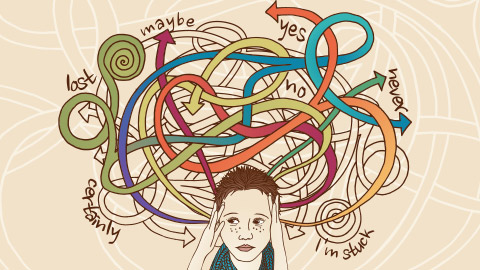
Terms to know
There's a lot of terminology around transgender identities. Here's a quick introduction to terms you'll want to know.
Real people
Transgender people discuss their identities and experiences.
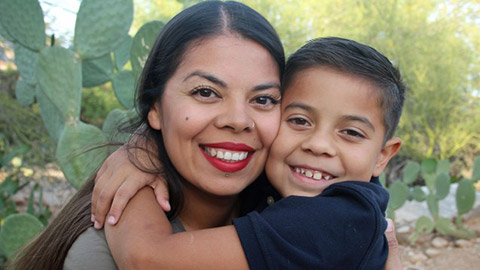
"I was worried that you liked me as a girl"
Listen to a conversation between Gabe, a young transgender boy, and his mom, Chris Lopez.
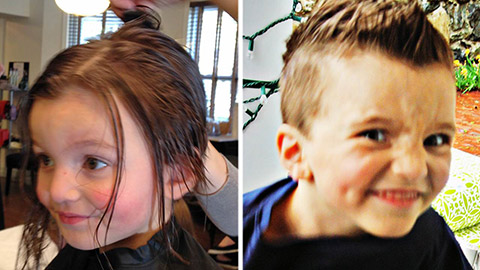
“Why did God make me wrong?”
Learn about Jacob and his family's journey from confusion to acceptance.

"It's just how you really are inside"
Watch this update for the latest on Jacob and his family's story.

“I watched her die inside”
When DeShanna Neal’s son began to dress and act like a girl, she saw the impact of societal shunning firsthand: “I watched her die inside.”

"I had to do something"
Ryland Whittington knew he was a boy. The question was, would other people accept that?
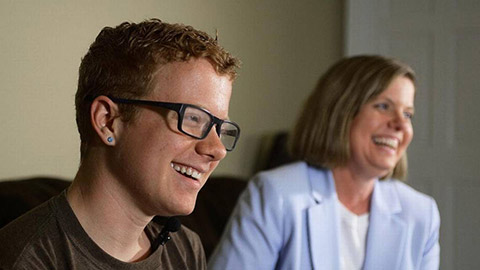
"It was like a weight off my shoulders"
Watch to learn why Kaleb's mom considers him to be "one of the bravest people" she knows.

Growing up transgender and Mormon
“I had this fantasy . . . that a fairy godmother would come and turn me into a girl and make everything better.”
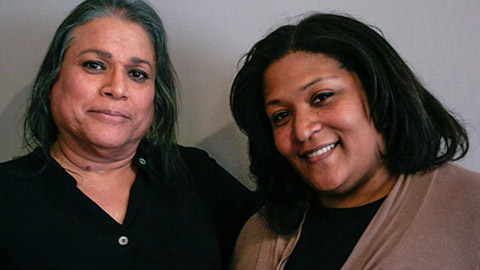
"I went as macho as I could be"
Alexis grew up in the 1960's in a housing project. Being open about her transgender identity was not an option.
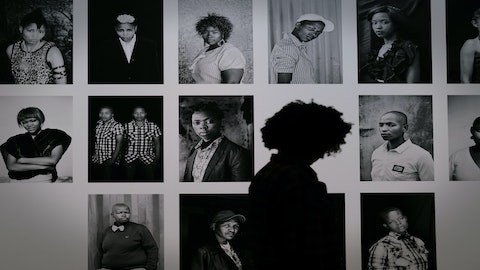
The life journey of a Black trans woman
"There’s a teenaged girl I didn’t quite get to be and I’ve built the life she would have wanted.”

"We're the front-liners"
Sylvia Rivera was a tireless advocate for transgender people and the larger LGBTQ+ community, yet few people have heard of her. Learn about her struggles and accomplishments.

"True to Himself"
Read about the first openly transgender swimmer in NCAA Division I athletics.

"You are my sister"
Two transgender veterans share their story of friendship and unconditional love.

"Ex-GI Becomes Blonde Beauty"
Christine Jorgensen gained fame as a transgender woman at a time when most members of the LGBTQ+ community were attacked and vilified.

Experiences, Challenges and Hopes
Explore the experiences, challenges and hopes of transgender and nonbinary persons in a report based on focus groups held by the Pew Research Center.

Being an authentic ally
She was a passive ally. Then, her husband revealed he was transgender.

Creating an inclusive workplace
Learn about some practical ways to be supportive of transgender persons in the workplace.

Just one ounce of grace
A Texas mom describes the difference gender affirming care has made in her child's life--and her fears of what will happen if young people suddenly lose access to the services they need.
Double Jeopardy
Transgender women of color face distinct challenges

Killed for being transgender
Learn why the American Medical Association is warning of an “epidemic” of violence against transgender persons, with transgender women of color the most frequent victims.
Transitioning
What does it mean for a person to transition? This section covers the essentials.

Making the decision to transition
Decisions around transitioning are highly personal and vary from one individual to the next.
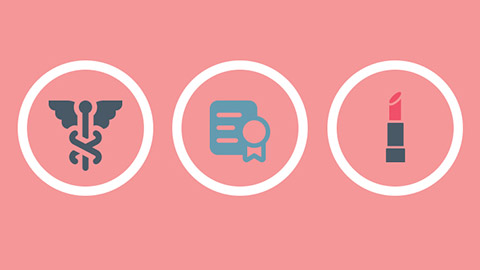
The different approaches to transitioning
Transitioning doesn’t always involve surgery.

Gender affirming care
No more “watchful waiting.” Read why the American Academy of Pediatrics advocates a gender-affirming approach in caring for transgender and gender-diverse children.
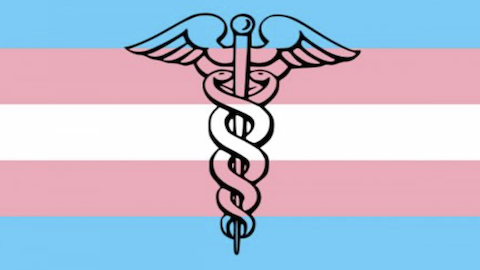
Sorting out the facts
Get the facts on gender-affirming care for transgender youth.
The Science
Scientists are researching the biological basis of transgender identities.

Understanding our brain
Neuroscientists are comparing brain structure and function in transgender and cisgender persons with notable results.

How transgender research is changing science
As transgender awareness grows in society, science is catching up. Find out what’s being done to close that gap and what we’ve learned so far.
The Stats
How many people are transgender? It might be more than you think.
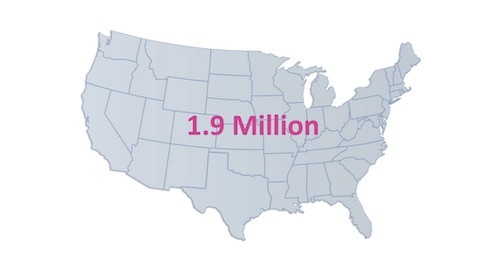
Transgender population in the US
Explore the state-by-state data on the distribution of transgender people by age across the U.S.
Glossary
Affirmed Gender
(Noun) A term used to describe a person's gender, based on their innate understanding of themselves -- as opposed to the gender they were assigned at birth. A person can affirm their gender socially (e.g. changing one's pronouns), legally (e.g. legal name change), and/or medically (e.g. gender-affirming surgery). Increasingly used in place of older terms, such as preferred gender or chosen gender. Learn More
Agender
(Adj.) Describes a person who does not identify with any gender. Learn More
AMAB
(Acronym) An acronym meaning Assigned Male at Birth. Generally not considered an identity, as calling a transgender woman “AMAB,” for example, negates her identity as a woman. Learn More
Androgyne / Androgyny / Androgynous
(Adj.) Having the characteristics of masculinity and femininity; identifying and or presenting as neither specifically masculine nor specifically feminine. Learn More
Assumed Gender
(Noun) Describes the gender others presume an individual to be based on their assigned sex as well as societal gender markers, such as physical build, clothes, hair and voice. Learn More
Bottom surgery
(Noun) Refers to the surgery performed on an individual’s reproductive system as a part of gender-affirming surgery that some transgender people undergo (See Transition). Learn More
Cis/Cisgender
(Adj.) A term used to describe an individual whose gender identity aligns with their sex assigned at birth. i.e., a person born with female anatomy who identifies as a girl/woman. Learn More
Deadnaming
(Verb) Occurs when an individual, intentionally or not, refers to the name that a transgender or gender-expansive individual used at a different time in their life. Can also be referred to as birth name, given name or old name. Deadnaming can cause stress, trauma, embarrassment and even danger for trans people. Learn More
Enby
(Noun) A slang term used for nonbinary. Enby is the phonetic pronunciation of “NB,” an abbreviation for nonbinary. Learn More
Gender
(Noun) A social construct used to classify a person as a man, woman, or some other identity and ascribe qualities of masculinity and femininity to people. Gender characteristics can change over time and vary between cultures. Learn More
Gender affirming care
(Noun) Gender affirming care encompasses a range of medical, mental health, and social services that are designed to support and affirm a person's gender identity when it is different from the gender they were thought to be at birth. Gender affirming care occurs across a continuum, ranging from counseling and support for changes in social expression to medications, such as puberty blockers or hormone therapy, and, in some cases, surgical interventions. Learn More
Gender Affirming Surgery (GAS)
(Noun) Surgical procedures that allow persons to match their physical bodies to their gender identity. These procedures can include “top surgery” (e.g. reshaping a chest or providing breast augmentation) and/or “bottom surgery” (e.g. reshaping genitals). Also referred to as gender-confirming surgery, gender reassignment surgery or medical transition. Learn More
Gender dysphoria
(Noun) Clinically significant distress that can occur in persons whose gender identity differs from the sex they were thought to be at birth. Can also describe a desire to change the characteristics that are the source of the distress, such as physical anatomy. Learn More
Gender Euphoria
(Noun) Describes the feeling of significant right-ness or comfort experienced when a person's gender is recognized and respected by others, when their body aligns with their gender, or when they express themselves in accordance with their gender. Focusing on gender euphoria instead of gender dysphoria shifts focus to the positive aspects of being transgender or gender expansive (see Gender Dysphoria). Learn More
Gender expression
(Noun) The ways that a person communicates a gender identity to others such as dress, behavior, hairstyle, voice, and/or mannerisms. Learn More
Gender fluid
(Adj.) Describes a person who identifies their gender as shifting within a spectrum of gender identities and expressions. A person who is gender fluid may always feel like a mix of two (or more) genders, but may feel more one gender some days, and another gender other days. Gender-fluid people may or may not also identify as transgender. Learn More
Gender identity
(Noun) One’s deeply held, core sense of being a man, woman, or some other gender. A gender identity can be a combination of two or more genders (such as gender fluid), and some individuals don't identify with any gender at all--described as being agender. May or may not correspond with the sex or gender assigned at birth. Learn More
Gender non-conforming (GNC)
(Adj.) Describes a person who does not behave in a way that conforms to traditional expectations for their gender, or whose gender expression does not fit neatly into a category. GNC does not mean non-binary and cisgender people can be GNC as well. Also known as gender variant. Learn More
Gender Spectrum
(Noun) The concept that gender exists along a continuum beyond man/masculine and woman/feminine. Some people may be more aligned with masculine or feminine aspects, some move fluidly along the spectrum, and some exist outside the spectrum entirely. Learn More
Hijra
(Noun) A term used in South Asia, and particularly in India, which refers to a diverse community including individuals who do not identify as men or women as well as persons who identify as women but who were assigned the sex of male at birth. Legally recognized as a third gender today, hijras have been a part of South Asian culture for centuries but have also suffered marginalization and abuse. Term should be used with care, as some within the community consider it to be offensive. Learn More
Hormone blockers
(Noun) Also referred to as puberty blockers. Hormone blockers are medications that prevent the body from producing hormones associated with the physical changes of puberty. This is a form of gender-affirming medical care provided to some transgender youth. Learn More
Hyperfemininity
(Noun) A term used to describe exaggerated feminine qualities, behaviors and roles stereotypically associated with girls and women. Hyperfemininity is sometimes expected of transgender women in order be seen as “real” women. Learn More
Hypermasculinity
(Noun) A term used to describe exaggerated masculine qualities, behaviors and roles stereotypically associated with boys and men. Hypermasculinity is sometimes expected of transgender men in order be seen as “real” men. Learn more
Legal Transition
(Noun) Refers to the process through which a transgender person changes names and/or sex/gender categories on legal documents. These documents can include an updated driver’s license, social security card, and birth certificate. Other changes might involve changing government, work, school, bank and other institutional records. Learn More
Medical Transition
(Noun) Refers to the process through which a transgender person alters their physical appearance through medical procedures to reflect their gender identity. For example, adolescents might begin with puberty blockers and hormone treatments while adults might choose to undergo gender affirmation surgery. Not all transgender people undergo medical transition. Learn More
Misgender
(Verb) Using pronouns or a form of address that does not align with an individual's gender identity. Misgendering may be unintentional or can be used intentionally to express bias. Learn More
Mispronoun
(Verb) Refers to addressing a person with the incorrect pronouns. To mispronoun may be unintentional or can be used intentionally to express bias. Learn More
Mixed Pronouns
(Noun) Refers to a situation in which a person uses multiple pronouns, such as she/they or they/he/she. Generally, mixed pronouns can be used interchangeably. However, the desired balance among different pronouns can be different for each person. Learn More
Sex / Sex assigned at birth / Biological sex
(Noun) A person's sex (male, female, or intersex) is often determined based on the appearance of the genitalia, either in ultrasound or at birth. In reality, biological sex is more complicated, referring to a combination of anatomical, physiological, genetic, and physical attributes. These include genitalia, gonads, hormone levels, hormone receptors, chromosomes, genes, and secondary sex characteristics. The phrase "sex assigned at birth" is used by some to emphasize that genitalia alone are not always a sufficient indication of a person's sex, as well as the fact that a person's gender identity is not always aligned with the sex characteristics observed at birth. Learn More
Social Transition
(Noun) Refers to the process through which a transgender person makes changes in their name, pronouns, and/or appearance. For example, a child might shift to using a name and pronouns that align with their gender identity rather than their sex observed at birth. Trans women might grow their hair out and wear makeup; trans men may ‘bind’ or compress their breasts. Learn More
Third gender
(Noun) A concept in which individuals are categorized by themselves, their society, or outsiders to their society, as not fitting into the Western ideas of binary gender and heterosexual roles. The phrase "third gender" has been used for a wide variety of meanings, including in reference to: hundreds of indigenous societal roles as described (and often misrepresented) by Western anthropologists; transgender people who are nonbinary; and women who are considered to be gender-nonconforming. The term can be considered offensive. When possible, use the culturally appropriate and/or individually preferred term when referring to someone’s gender identity in lieu of “third gender.” Learn more
Top surgery
(Noun) Refers to the surgery performed on a person’s chest or breasts either to reshape a chest or to provide breast augmentation as part of gender-affirming medical care that some transgender persons undergo. (See Gender-affirming Surgery) Learn More
T4T
(Adj.) Short for Trans 4 Trans. Describes a transgender person who is exclusively attracted to other transgender persons. T4T relationships allow transgender persons to relate to one another without having to explain their identity or experiences. Only those who are transgender or non-cisgender can identify with this term. Learn More
Transgender / Trans*
(Adj.) Describes a person whose gender identity does not match their sex characteristics observed at birth. People who identify as transgender (sometimes shortened to "trans") may or may not decide to alter their bodies hormonally and/or surgically to match their gender identity. This word is also sometimes used as a broad umbrella term to describe those who transcend conventional expectations of gender identity or expression, such as people who identify as genderqueer, gender variant, gender diverse, or androgynous. Learn More
Transition
(Noun) The process by which some people strive to more closely align their outward appearance with their internal feelings/perceptions of their gender. This may, but does not always, include hormone therapy, surgical or other medical procedures, and changing names, pronouns, identification documents, and more. Often referred to as gender transition. Learn More
Transromantic
(Adj.) Describes a person who experiences romantic attraction to individuals whom they perceive to be transgender. Learn More
Explore More Topics
Citations & Sources
A guide to transgender terms. (2015, June 3). BBC News Magazine. http://www.bbc.com/news/magazine-32979297
Bakker, J. (2018) Brain structure and function in gender dysphoria. Presented at the 20th European Congress of Endocrinology. Endocrine Abstracts, 56(S 30.3). https://www.endocrine-abstracts.org/ea/0056/ea0056s30.3.htm
Bodkin, H. (2018, May 22). Transgender brain scans promised as study shows structural differences in people with gender dysphoria. Telegraph. https://www.telegraph.co.uk/news/2018/05/22/transgender-brain-scans-promised-study-shows-structural-differences/?WT.mc_id=tmg_share_fb
Burke, S., Kreukels, B., Cohen-Kettenis, P., Veltman, D., Klink, D., & Bakker, J. (2016). Male-typical visuospatial functioning in gynephilic girls with gender dysphoria - organizational and activational effects of testosterone. Journal of Psychiatry & Neuroscience, 41(6), 395–404. https://doi.org/10.1503/jpn.150147
Chokshi, N. (2017, February 23). One in every 137 teenagers would identify as transgender, report says. New York Times. https://www.nytimes.com/2017/02/23/us/transgender-teenagers-how-many.html
Cornell University. (n.d.). What does the scholarly research say about the effect of gender transition on transgender well-being? What We Know: The Public Policy Portal. https://whatweknow.inequality.cornell.edu/topics/lgbt-equality/what-does-the-scholarly-research-say-...
Database of transgender homicides 2010-2018. (2019). Mic. https://unerased.mic.com
Eligon, J. (2017, August 6). Transgender African-Americans’ open wound: ‘We’re considered a joke’. New York Times. https://www.nytimes.com/2017/08/06/us/black-transgender-lil-duval.html?searchResultPosition=80
Elijah/Esther. (2015, May 4). New York Times. https://www.nytimes.com/interactive/projects/storywall/transgender-today/stories/elijah-esther
Fitzsimons, T. (2018, September 17). Pediatric group recommends 'affirmative care' for transgender youth. NBC News. https://www.nbcnews.com/feature/nbc-out/pediatricians-group-recommends-affirmative-care-transgender-youth-n910451
Flores, A.R., Herman, J.L., Gates, G.J. & Brown, T.N.T. (2016) How many adults identify as transgender in the United States? Williams Institute, UCLA School of Law. https://williamsinstitute.law.ucla.edu/publications/trans-adults-united-states/
Garcia-Falgueras, A. & Swaab, D.F. (2008). A sex difference in the hypothalamic uncinate nucleus: relationship to gender identity. Brain: A Journal of Neurology, 131(12), 3132-3146. https://academic.oup.com/brain/article/131/12/3132/295849/A-sex-difference-in-the-hypothalamic-uncin...
Garloch, K. (2017, February 6). ‘I want to be a girl all the time,’ child told parents. Now, mom’s story helps others. Charlotte Observer. http://www.charlotteobserver.com/living/health-family/karen-garloch/article131054374.html
Getahun, D., Nash R., Flanders W.D., Baird, T.C., Becerra-Culqui, T.A., Cromwell, L., Hunkeler, E., Lash, T.L., Millman, A., Quinn, V.P., Robinson, B., Roblin, D., Silverberg, M.J., Safer, J., Slovis, J., Tangpricha, V., & Goodman, M. (2018). Cross-sex hormones and acute cardiovascular events in transgender persons: A cohort study. Annals of Internal Medicine, 169(4), 205–213. https://doi.org/10.7326/M17-2785
Hendricks, M.L. & Testa, R.J. (2012). A conceptual framework for clinical work with transgender and gender nonconforming clients: An adaptation of the Minority Stress Model. Professional Psychology: Research and Practice, 43(5) 460-467. doi:10.1037/a0029597
Herdt, G. (1996). Third sex, third gender: Beyond sexual dimorphism in gender and history. Zone Books.
Herman, J.L., Flores, A.R., Brown, T.N.T., Wilson, B.D.M., & Conron, K.J. (2017). Age of individuals who identify as transgender in the United States. Williams Institute, UCLA School of Law. https://williamsinstitute.law.ucla.edu/publications/age-trans-individuals-us/
Heylens, G., Verroken, C., De Cock, S., T’Sjoen, G., & De Cuypere, G. (2014). Effects of different steps in gender reassignment therapy on psychopathology: A Prospective study of persons with a gender identity disorder. The Journal of Sexual Medicine., 11(1), 119–126. https://www.jsm.jsexmed.org/article/S1743-6095(15)30533-6/fulltext
Hoffman, J. (2016, June 30). Estimate of U.S. Transgender population doubles to 1.4 million adults. New York Times. https://www.nytimes.com/2016/07/01/health/transgender-population.html?_r=0
Khaleeli, H. (2014, April 16). Hijra: India’s third gender claims its place in law. Guardian. https://www.theguardian.com/society/2014/apr/16/india-third-gender-claims-place-in-law
Kincaid, A. (2016, August 23). Why I had to come out as a black trans woman. HuffPost. https://www.huffingtonpost.com/entry/post_12733_b_11258546.html
National Geographic. (2015, October 20). Growing up transgender and Mormon | Short film showcase [Video]. YouTube. www.youtube.com/watch?v=Z8FZewEPAA
Nature Video. (2019, April 2). Understanding transition [Video]. Youtube. https://www.youtube.com/watch?v=-B62IbbwYMU
Office for Victims of Crime. (2014, June). Responding to transgender victims of sexual assault. https://ovc.gov/pubs/forge/transgender_choices.html
Rafferty, J., AAP Committee on Psychosocial Aspects of Child and Family Health, AAP Committee on Adolescence, AAP Section on Lesbian, Gay, Bisexual, and Transgender Health and Wellness. (2018, October). Ensuring comprehensive care and support for transgender and gender-diverse children and adolescents. Pediatrics, 142(4). https://pediatrics.aappublications.org/content/142/4/e20182162
Raypole, C. (2016, June 29). What does it mean for a transgender person to transition? Good Therapy. https://www.goodtherapy.org/blog/what-does-it-mean-for-transgender-person-to-transition-0629167
Reardon, S. (2019, April 24). The largest study involving transgender people is providing long-sought insights about their health. Nature. https://www.nature.com/articles/d41586-019-01237-z
Rojas, R. & Swales, V. (2019, September 27). 18 Transgender killings this year raise fears of an epidemic. New York Times. https://www.nytimes.com/2019/09/27/us/transgender-women-deaths.html?smid=nytcore-ios-share
Snow, K. (2015, April 23). Jacob’s journey: Life as a transgender 5-year old. NBC News. http://www.nbcnews.com/storyline/transgender-kids/jacob-s-journey-life-transgender-5-year-old-n34513...
StoryCorps. (2013, May 5). Alexis Martinez and Lesley Martinez Etherly [Audio Podcast]. https://storycorps.org/listen/alexis-martinez-and-lesley-martinez-etherly/
StoryCorps. (2016, May 1). Chris López and Gabe López [Audio Podcast]. https://storycorps.org/listen/chris-and-gabe-lopez-160501/
Stotzer, R.L. (2017). Data sources hinder our understanding of transgender murder. American Journal of Public Health, 107(9), 1362–1363. https://www.ncbi.nlm.nih.gov/pmc/articles/PMC5551619/
Wu, K.J. (2016, October 25). Between the (gender) lines: The science of transgender identity. Science in the News. http://sitn.hms.harvard.edu/flash/2016/gender-lines-science-transgender-identity/
